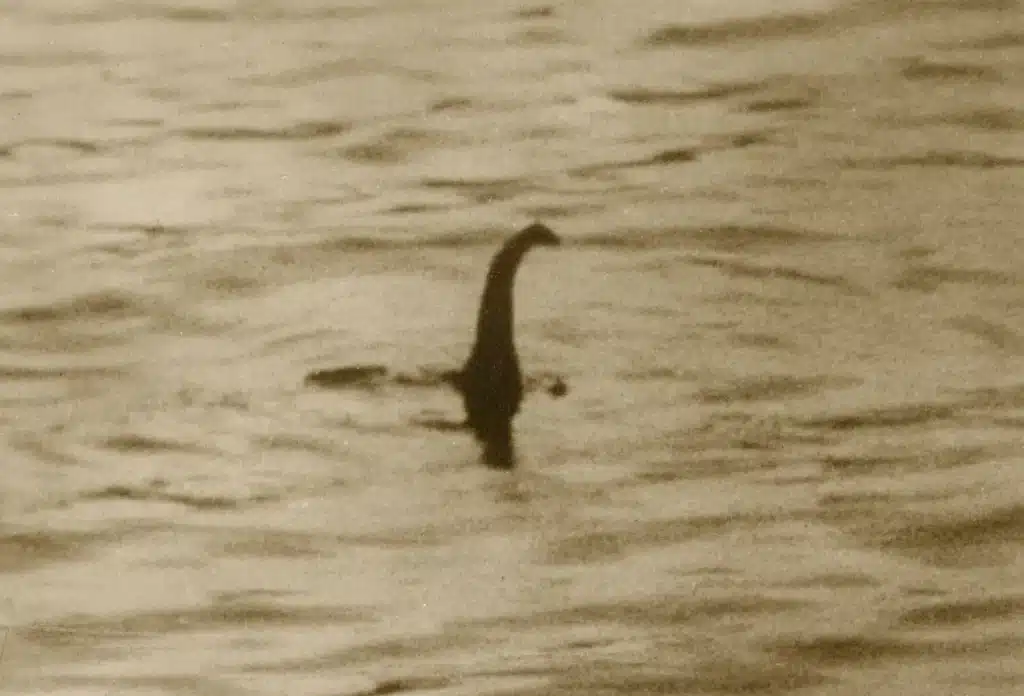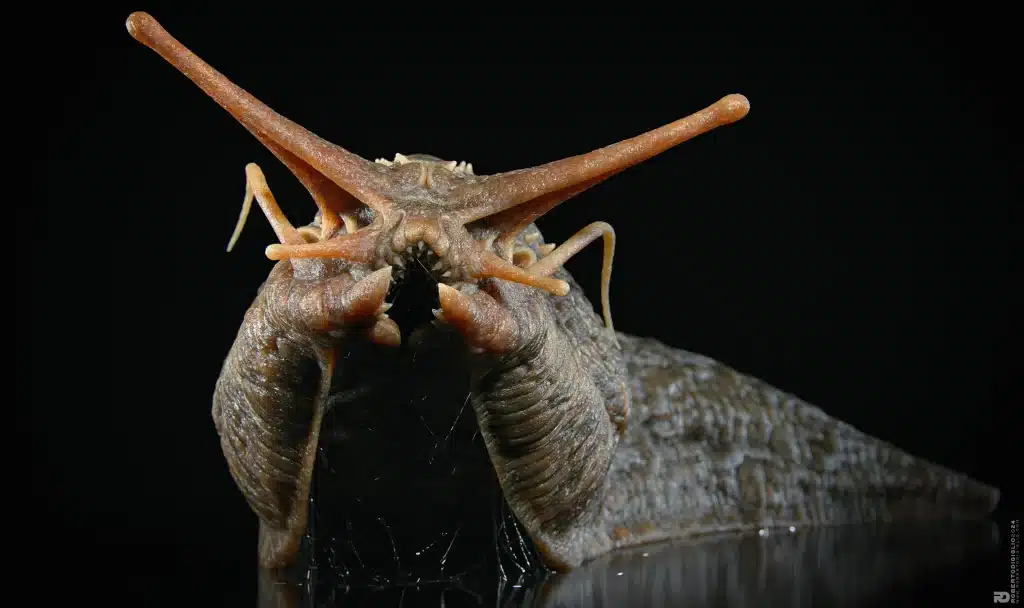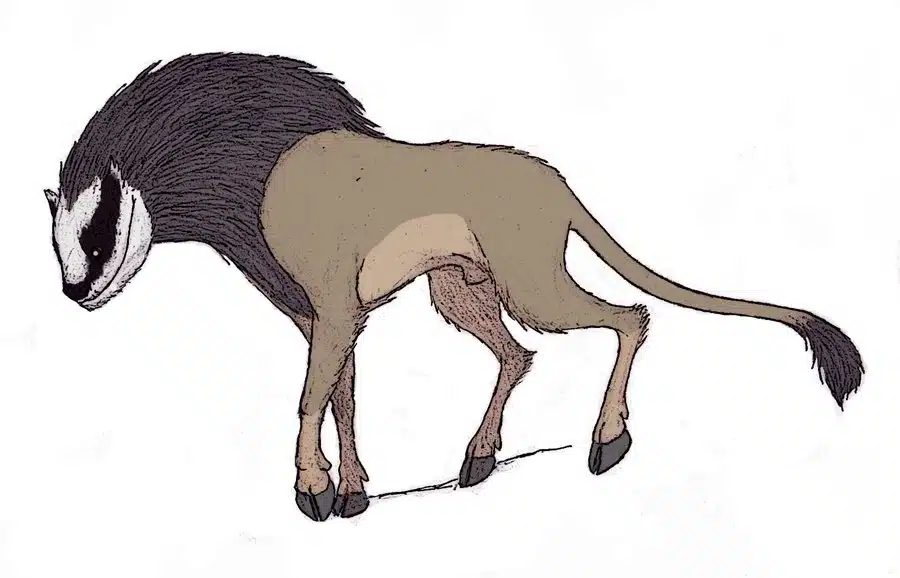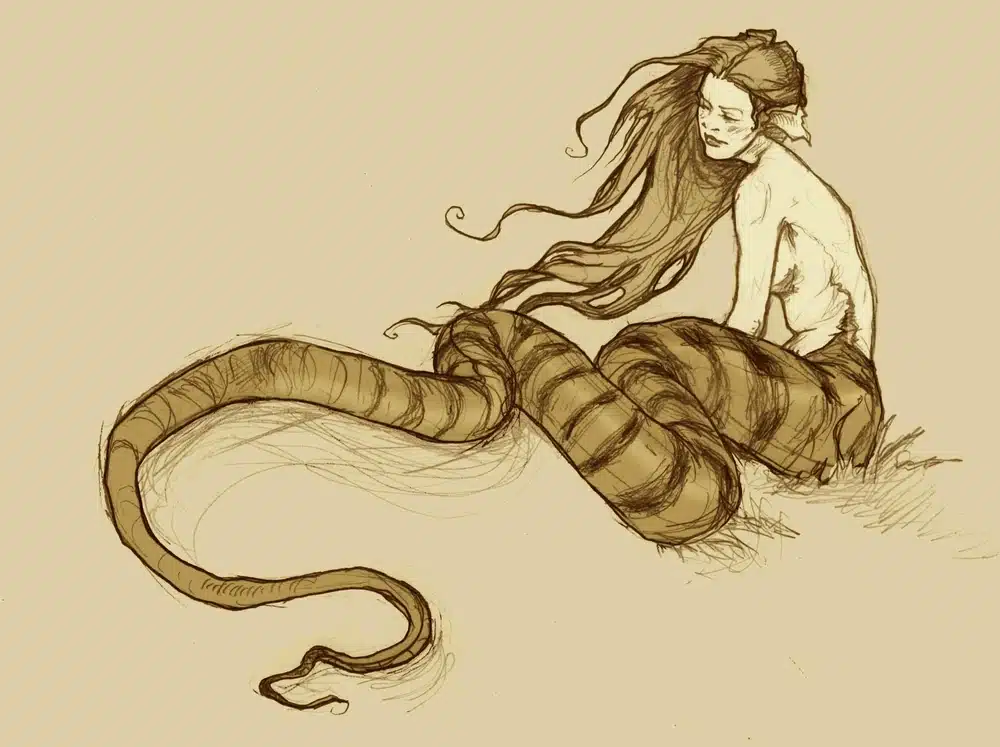Have you ever wondered about the intriguing world of mythical creatures? From ancient tales to modern stories, these extraordinary beings have left a lasting impression on our imaginations.
Interestingly, many legendary creatures’ names begin with the letter “L,” opening a gateway to a realm of fascination and mystery.
This article explores the captivating stories and symbolism behind mythical creatures whose names start with “L.”
We’ll examine their origins, the tales surrounding them, and their significance within various cultures.
Get ready to uncover the secrets of these extraordinary beings as we embark on a journey guided by the letter “L.”
List of Legendary Creatures Starting with L
1. Lindworm
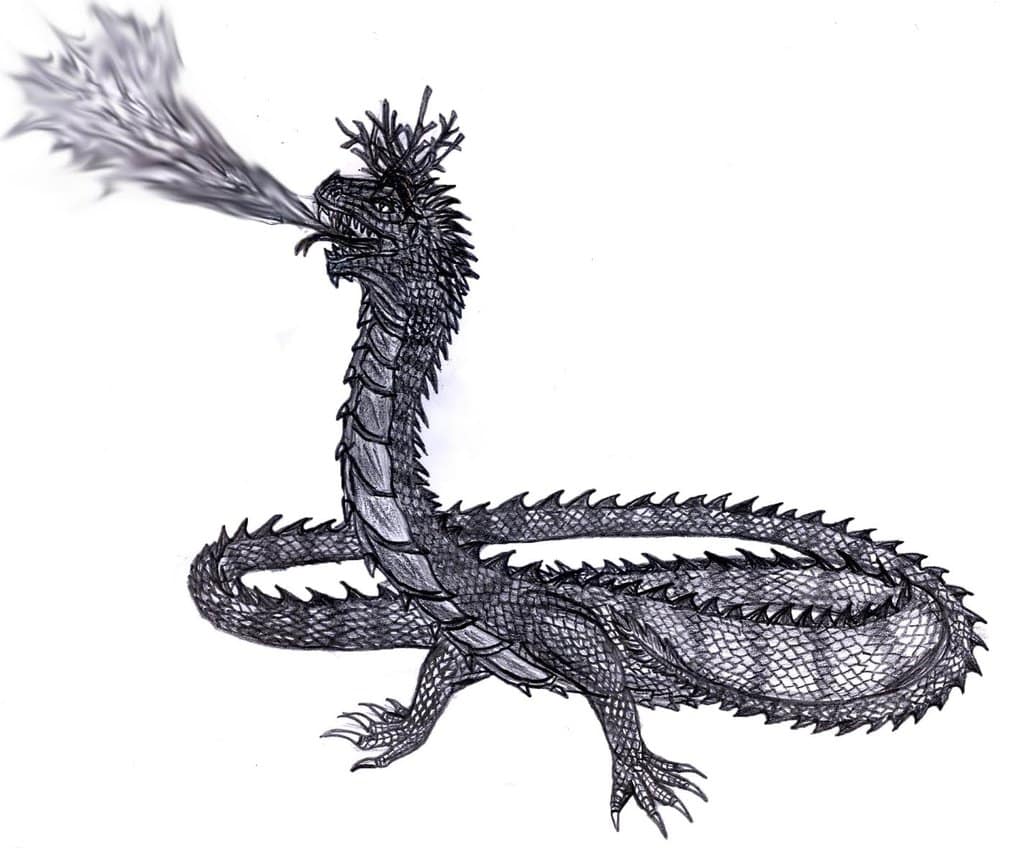
- Origin: A serpentine dragon from European folklore.
- Cultural Significance: Represents the untamed wilderness and the dangers lurking in unknown territories.
- Modern Depictions: Appears in fantasy literature and games as a formidable adversary or guardian of ancient treasures.
The Lindworm, a wingless dragon-like creature from European mythology, symbolizes nature’s wild and untamed aspects.
Often depicted as a serpent with dragon-like features, it represents the fear of the unknown and the dangers lurking in unexplored lands.
In modern fantasy, Lindworms are portrayed as fierce guardians or challenging foes, embodying the struggle between civilization and wilderness.
2. Longma
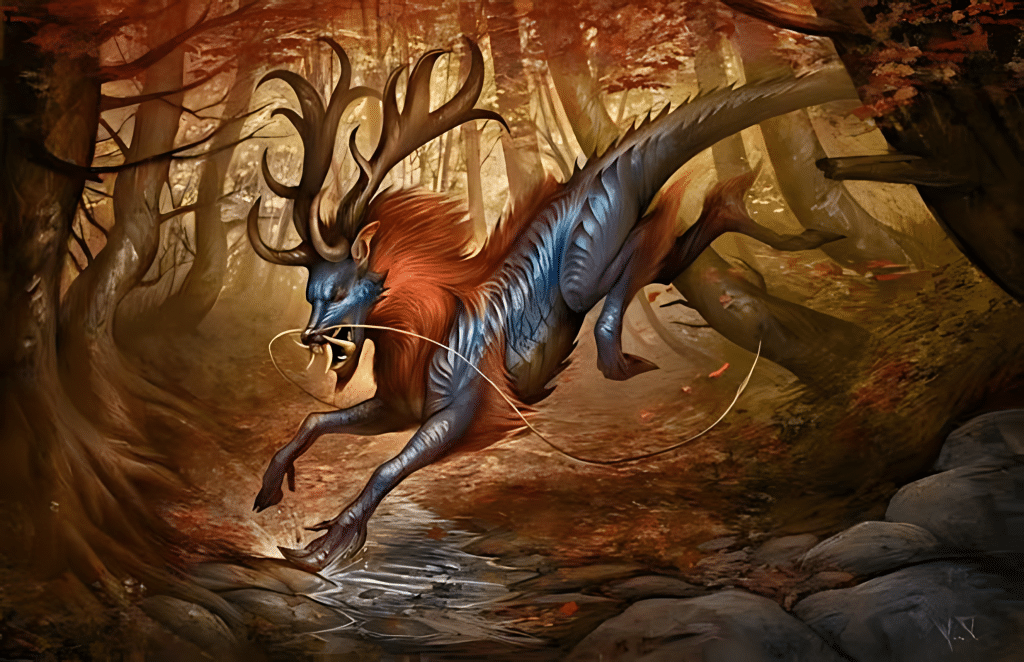
- Origin: A winged horse with dragon scales from Chinese mythology.
- Cultural Significance: Symbolizes wisdom, strength, and good fortune.
- Modern Depictions: Featured in Asian-inspired fantasy as noble steeds or wise companions.
The Longma, a creature combining the features of a horse and a dragon, represents the harmonious blend of earthly and celestial qualities in Chinese mythology.
Known for its wisdom and strength, the Longma is often associated with good fortune and divine favor.
In contemporary media, Longma-inspired creatures appear in fantasy works, particularly those drawing from Asian mythology, as noble companions or bearers of ancient wisdom.
3. Lupin
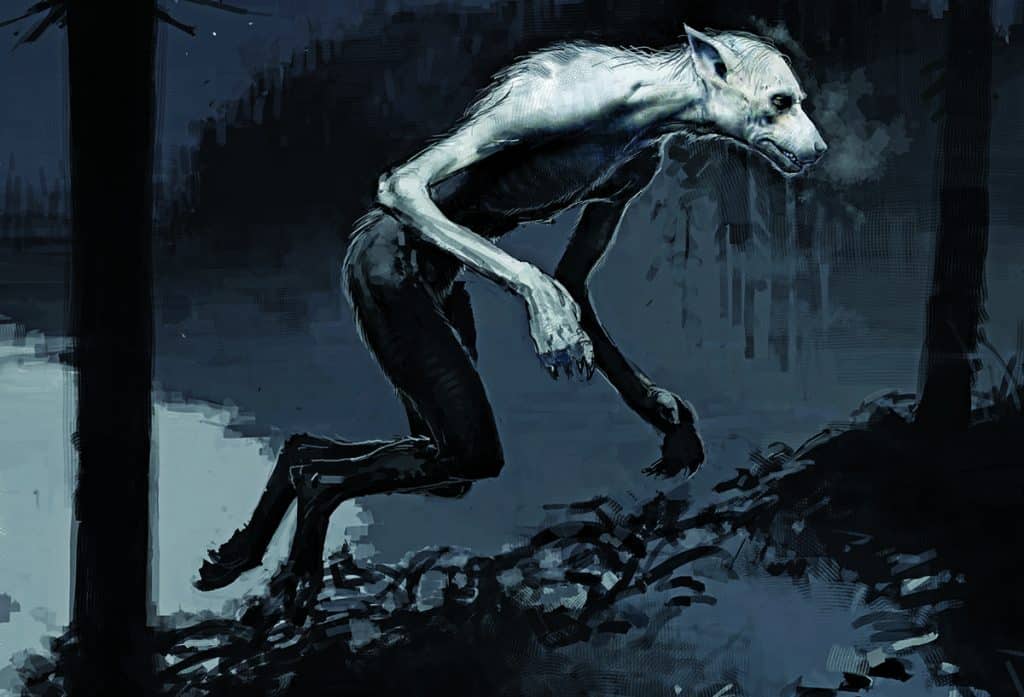
- Origin: A werewolf-like creature from European folklore.
- Cultural Significance: Embodies the duality of human nature and the struggle between civilized behavior and primal instincts.
- Modern Depictions: Frequently featured in horror and urban fantasy genres, exploring transformation and inner conflict themes.
The Lupin, a werewolf-like being, represents the struggle between human rationality and animal instinct.
This creature has long been a symbol of the darker aspects of human nature and the transformative power of the wild.
In modern literature and film, Lupins or werewolves are often portrayed as complex characters grappling with their dual nature, serving as metaphors for inner turmoil and societal alienation.
4. Loch Ness Monster
- Origin: A cryptid said to inhabit Loch Ness in Scotland.
- Cultural Significance: Represents the enduring mystery of the natural world and the human fascination with the unknown.
- Modern Depictions: Featured in documentaries, novels, and films, often as a symbol of cryptozoological intrigue.
The Loch Ness Monster, affectionately known as “Nessie,” embodies the allure of undiscovered creatures and the persistence of mystery in the modern world.
This legendary beast has captured the public imagination for decades, symbolizing the human desire to believe in the extraordinary.
In contemporary media, the Loch Ness Monster appears in various forms, from serious scientific investigations to whimsical children’s tales, always maintaining its status as an icon of cryptozoology.
5. Likho

- Origin: A one-eyed creature from Slavic mythology personifying misfortune and evil fate.
- Cultural Significance: Represents the inevitability of bad luck and the erratic nature of fate.
- Modern Depictions: Inspires characters in dark fantasy and horror, often as harbingers of doom or embodiments of misfortune.
Likho, the one-eyed creature of Slavic lore, personifies the concept of ill fortune and evil fate.
This being is a cautionary figure, reminding people of life’s unpredictable nature and the constant presence of misfortune.
In modern storytelling, Likho-inspired characters often appear in narratives that explore themes of destiny, bad luck, and the struggle against seemingly insurmountable odds.
6. Lusca

- Origin: A half-shark, half-octopus sea monster from Caribbean folklore.
- Cultural Significance: Embodies the dangers and mysteries of the deep sea.
- Modern Depictions: Featured in marine horror stories and adventure tales set in tropical waters.
The Lusca, a terrifying blend of shark and octopus, represents the unknown terrors lurking in the ocean’s depths.
This creature symbolizes humans’ fear and fascination with the unexplored realms of the sea.
In contemporary media, the Lusca and similar hybrid sea monsters appear in marine horror films and novels, embodying the primal fears of the vast, mysterious oceans.
7. Lavellan
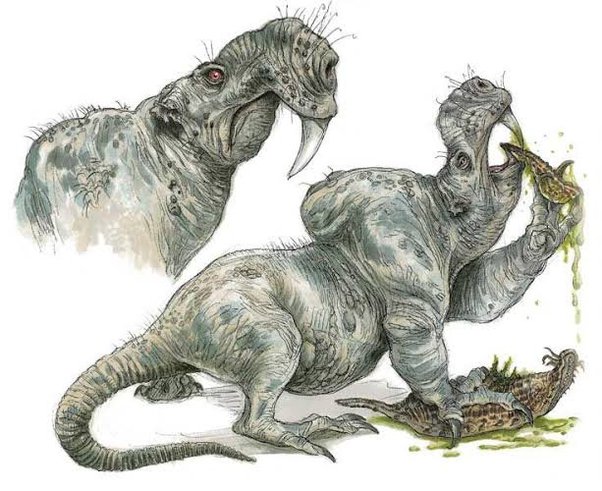
- Origin: A rodent-like water creature from Scottish folklore.
- Cultural Significance: Represents the hidden dangers in seemingly harmless environments.
- Modern Depictions: Inspires characters in fantasy stories, often as deceptively dangerous small creatures.
The Lavellan, a creature from Scottish myth, is said to be a rodent-like being capable of causing harm through its touch or glance.
This creature symbolizes that danger can come in small, unassuming packages.
In modern fantasy, Lavellan-inspired beings often appear as seemingly harmless creatures with unexpected and usually deadly abilities, teaching the lesson of not judging by appearances.
8. Loogaroo
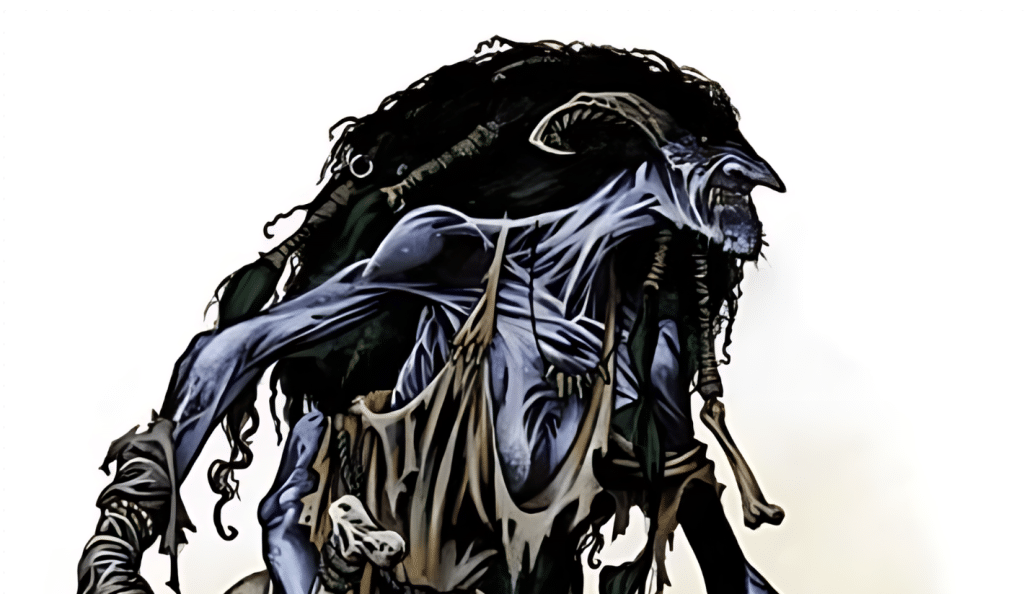
- Origin: A shape-shifting vampire-like creature from Caribbean folklore.
- Cultural Significance: Embodies fears of witchcraft and the unknown.
- Modern Depictions: Appears in supernatural fiction set in tropical locales, often as a unique twist on vampire lore.
The Loogaroo, a vampiric entity from Caribbean myths, is known for its ability to shed its skin and transform into a ball of light.
This creature represents the fear of the unknown and the belief in evil supernatural forces.
In contemporary literature and film, Loogaroo-inspired characters add a unique flavor to vampire narratives, often appearing in stories that blend traditional folklore with modern supernatural themes.
9. Limax
- Origin: A giant slug monster from medieval bestiaries.
- Cultural Significance: Symbolizes slow but inevitable destruction and decay.
- Modern Depictions: Inspires creatures in fantasy and horror genres, often as symbols of corruption or environmental hazards.
The Limax, a monstrous slug described in medieval texts, represents gradual destruction and the inevitability of decay.
This creature, though slow-moving, was believed to be capable of causing significant harm.
In modern fantasy and horror, Limax-inspired monsters often appear as embodiments of corruption or as metaphors for environmental degradation, their slow but relentless nature making them particularly unsettling antagonists.
10. Leucrocota
- Origin: A hybrid beast from medieval bestiaries, combining features of a lion, deer, and badger.
- Cultural Significance: Represents the unknown and the fear of the unfamiliar in distant lands.
- Modern Depictions: Appears in fantasy literature as exotic and dangerous creatures in unexplored territories.
The Leucrocota, a chimeric beast from ancient and medieval lore, embodies the medieval fascination with exotic and fantastic creatures from far-off lands.
This hybrid animal represents humans’ tendency to imagine strange and terrifying beasts in unknown territories.
In modern fantasy, Leucrocota-inspired creatures often populate the unexplored regions of fictional worlds, challenging adventurers and symbolizing the wild unknown.
11. Lidérc
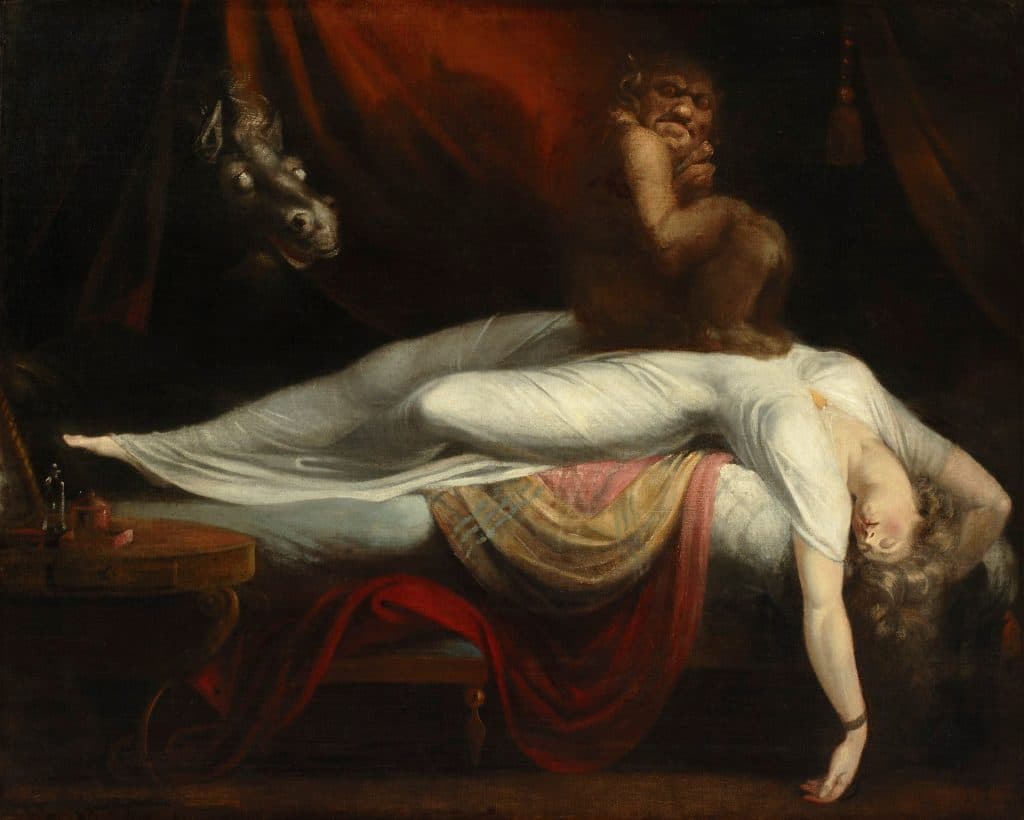
- Origin: A shape-shifting creature from Hungarian folklore, often associated with nightmares and sleep paralysis.
- Cultural Significance: Embodies nocturnal fears and the terror of being helpless in one’s bed.
- Modern Depictions: Influences characters in psychological horror, particularly in stories dealing with sleep disorders and night terrors.
The Lidérc, a multi-faceted creature from Hungarian myths, is associated with various nocturnal phenomena, including sleep paralysis and nightmares.
This represents humans’ vulnerability during sleep and the terrors they can experience at night.
In contemporary horror, Lidérc-inspired entities often appear in stories exploring the psychological aspects of fear, particularly those dealing with sleep disturbances and the blurred line between dreams and reality.
12. Lizard Man
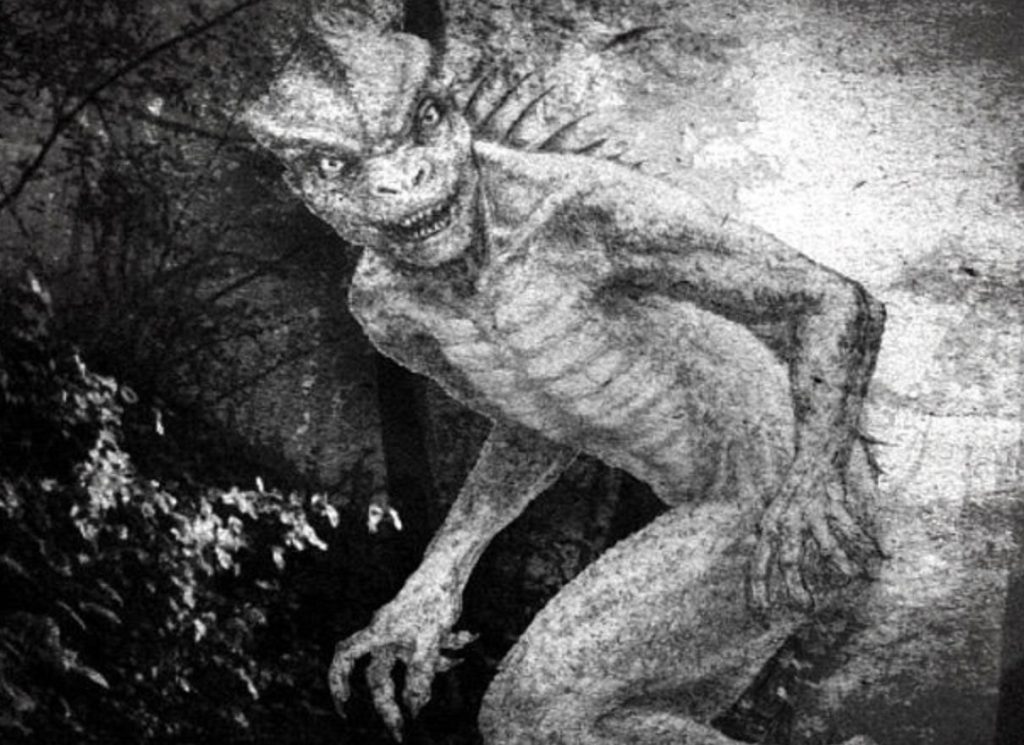
- Origin: A reptilian humanoid creature from modern urban legends, particularly associated with the American South.
- Cultural Significance: Represents the enduring human fascination with cryptids and the unknown in familiar settings.
- Modern Depictions: Featured in cryptozoological documentaries, urban fantasy, and horror stories set in swamp-like environments.
The Lizard Man, a creature of recent folklore, embodies the modern human desire to believe in the existence of unknown species, even in well-explored areas.
This represents the persistence of mystery in the contemporary world and the thrill of potential discoveries.
In popular culture, Lizard Man-type creatures appear in various media, from sensationalized documentaries to fictional narratives, often as a bridge between the familiar and the fantastical.
13. Liderč

- Origin: A mischievous household spirit from Slavic folklore.
- Cultural Significance: Represents the dual nature of domestic spirits, capable of both help and harm.
- Modern Depictions: Inspires characters in urban fantasy, often as ambiguous supernatural entities in modern household settings.
The Liderč, a household spirit from Slavic traditions, embodies the complex relationship between humans and the supernatural in domestic spaces.
These spirits were believed to be capable of assisting and tormenting a home’s inhabitants.
In contemporary fantasy literature, Liderč-inspired beings often appear as morally ambiguous entities, challenging characters to navigate relationships with unpredictable supernatural forces in everyday settings.
14. Langsuir

- Origin: A female vampire-like creature from Malay folklore, associated with women who died in childbirth.
- Cultural Significance: Embodies societal fears surrounding death in childbirth and the grief of losing a child.
- Modern Depictions: Appears in Southeast Asian horror films and literature, often exploring maternal loss and vengeance themes.
The Langsuir, a tragic figure from Malay mythology, represents the devastating consequences of maternal death and the transformation of grief into an evil force.
This creature embodies societal fears surrounding childbirth and the supernatural implications of untimely death.
In modern horror, particularly in Southeast Asian cinema and literature, Langsuir-inspired characters often serve as complex antagonists, their stories exploring themes of loss, vengeance, and the enduring power of maternal love.
15. Lampalugua

- Origin: A dog-like creature with glowing eyes from Philippine folklore.
- Cultural Significance: Represents the dangers lurking in the darkness and the fear of the unknown in rural areas.
- Modern Depictions: Inspires characters in Filipino horror stories and films, often as harbingers of doom or guardians of forbidden places.
The Lampalugua, a nocturnal creature from Philippine myths, embodies the fears associated with darkness and the unknown dangers of the night.
Known for its glowing eyes, this represents the unseen threats people imagine lurking in the shadows.
In contemporary Filipino horror and fantasy, Lampalugua-inspired creatures often appear as eerie guardians of sacred or forbidden places or as omens of impending danger, tapping into primal fears of the dark and the unseen.
16. Lyngbakr
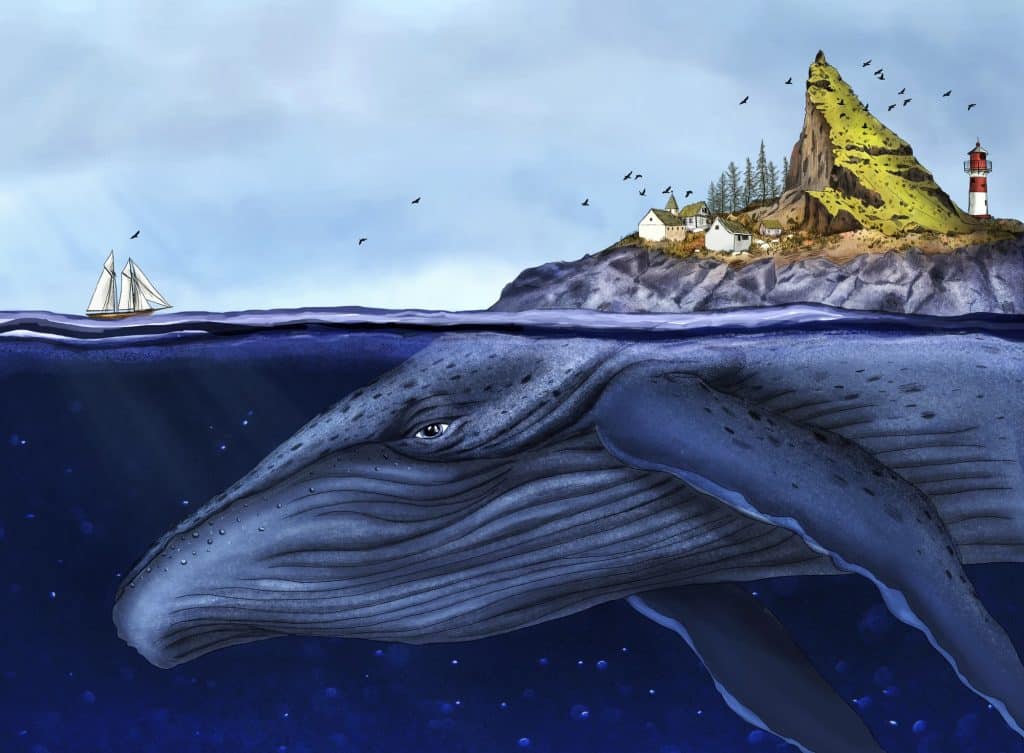
- Origin: A massive whale-like Norse mythology creature often mistaken for an island.
- Cultural Significance: Symbolizes the deceptive nature of the sea and the hidden dangers sailors face.
- Modern Depictions: Appears in maritime fantasy and adventure stories, often as a living island or a colossal sea monster.
The Lyngbakr, a huge sea creature from Norse legends, represents the unpredictable and deceptive nature of the ocean.
Often described as so large it could be mistaken for an island, this being embodies the awe and terror inspired by the vast, unknown depths of the sea.
In modern fantasy and adventure tales, Lyngbakr-inspired creatures frequently appear as living islands or as colossal sea monsters, challenging characters’ perceptions and serving as awe-inspiring obstacles or marvels in oceanic adventures.
17. Leprechaun

- Origin: A mischievous elf from Irish folklore known for his trickery and hidden pots of gold.
- Cultural Significance: Symbolizes the elusive nature of fortune.
- Modern Depictions: They are featured in various media, from children’s cartoons to horror films, depicting the dual nature of luck and consequence.
The Leprechaun, a well-known figure from Irish folklore, embodies the trickster archetype. He is known for his cunning and the elusive pot of gold he guards.
This creature symbolizes luck, mischief, and the pursuit of unattainable riches.
Leprechauns have been widely featured in various media, from children’s literature to horror movies.
Depending on the narrative, they are portrayed as whimsical, mischievous or malevolent beings.
18. Lion of Cithaeron
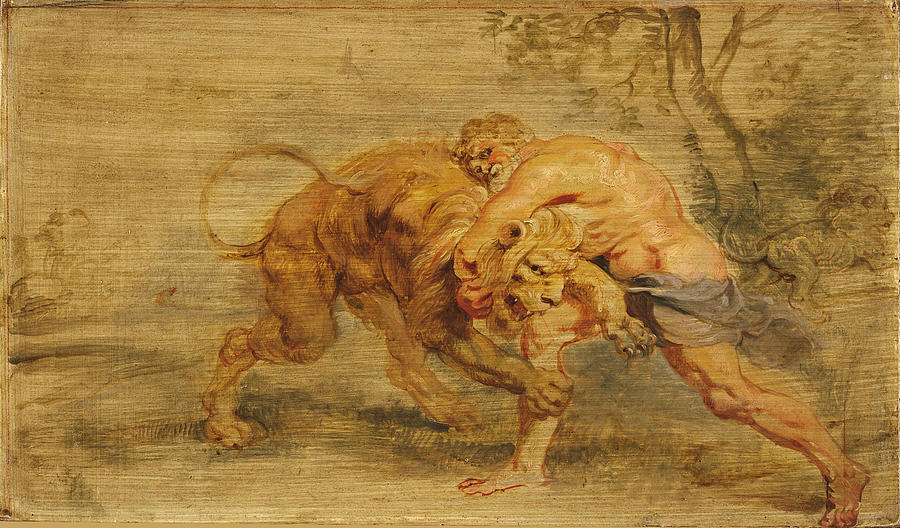
- Origin: A monstrous beast from Greek mythology encountered by Heracles.
- Cultural Significance: Represents the untamed nature and its challenges to heroes.
- Modern Depictions: Appears in fantasy novels and games, symbolizing the hero’s journey and confrontation with nature.
The Lion of Cithaeron, encountered by Heracles during one of his labors, represents the heroes’ physical challenges and natural adversities.
This beast adds to the lore of Heracles’ adventures and symbolizes the intersection of human bravery and untamed nature.
The Lion of Cithaeron’s story inspires modern depictions of heroism and the battle against formidable natural forces, often portrayed in literature and films that emphasize the hero’s journey against overwhelming odds.
19. Leogryph
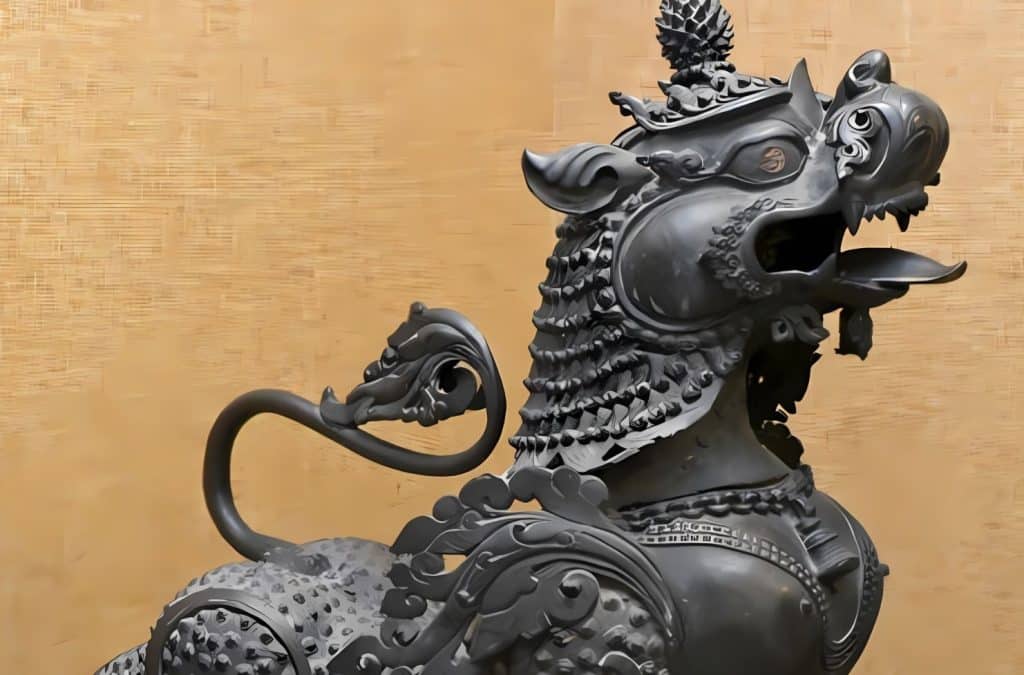
- Origin: Part lion, part griffin, a mythical creature symbolizing majesty and power.
- Cultural Significance: Represents the amalgamation of regal traits and the guarding of treasures.
- Modern Depictions: Appears in high fantasy worlds, guarding sacred places or treasures.
The Leogryph, a mythical creature, part lion and part griffin, represents the fusion of regal and protective qualities.
This creature symbolizes power and majesty, often guarding sacred or significant places in mythology.
In modern fantasy, the Leogryph inspires characters and creatures that combine features of different animals to create awe-inspiring and formidable beings.
These beings are often placed as guardians of treasures or ancient secrets in high fantasy narratives.
20. Leviathan
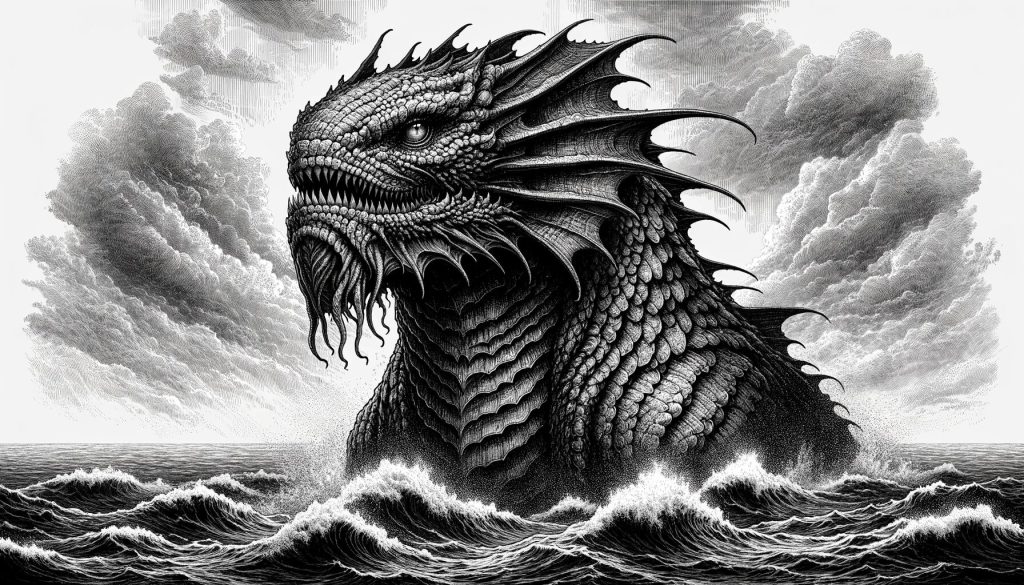
- Origin: A massive sea monster from biblical mythology, often symbolizing chaos and overwhelming power.
- Cultural Significance: Represents insurmountable obstacles and the primal forces of nature.
- Modern Depictions: Featured in literature and film, often as a metaphor for immense challenges or as literal behemoths of the deep.
The Leviathan, a vast sea monster from biblical mythology, represents chaos and the untamable nature of the ocean.
This creature is often used to symbolize insurmountable challenges or monstrous power.
The Leviathan has influenced various modern media, from fantasy epics to political theory. It is often used to represent powerful entities or forces, both literal and metaphorical, that are beyond the control of ordinary mortals.
21. Lamia
- Origin: A female monster from Greek mythology who transformed into a child-eating demon.
- Cultural Significance: Represents the darkness of grief and vengeance.
- Modern Depictions: Depicted in numerous horror films and books, symbolizing the transformation of pain into malevolence.
In Greek mythology, Lamia, once a queen transformed into a monster, represents the darker themes of transformation and vengeance.
Known for preying upon children, she embodies the horror of metamorphosis from beauty to monstrosity, a theme that resonates in various horror genres.
Lamia has inspired numerous depictions in modern horror films and literature. She often symbolizes the corruption of innocence and the manifestation of grief and vengeance.
22. Laestrygon
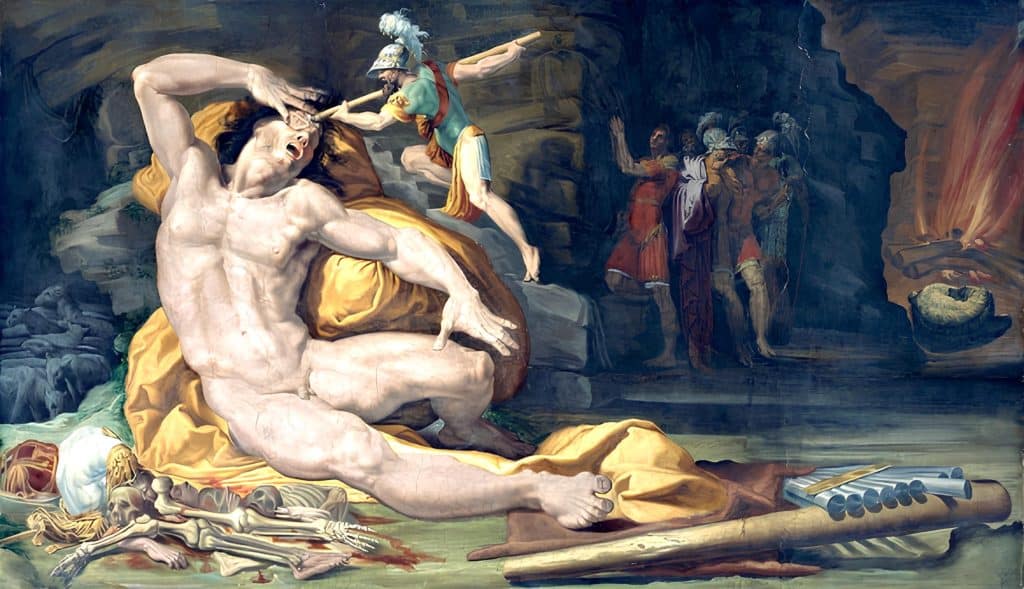
- Origin: A giant from Greek mythology known for his encounter with Odysseus.
- Cultural Significance: Represents the perils of exploration and the unknown.
- Modern Depictions: Influences the portrayal of giants and monstrous beings in fantasy settings.
The Laestrygon, a formidable giant in Greek mythology, epitomizes the dangers that lie in uncharted territories. His encounter with Odysseus, where he displays a cannibalistic nature, underlines the unpredictable perils of ancient voyages.
This mythological figure inspires various representations of giants in modern fantasy, often portrayed as formidable and unpredictable obstacles.
The Laestrygon’s influence extends into series and movies in which the thrill of exploration is central, and the characters encounter beings of immense power and danger.
23. Leshy
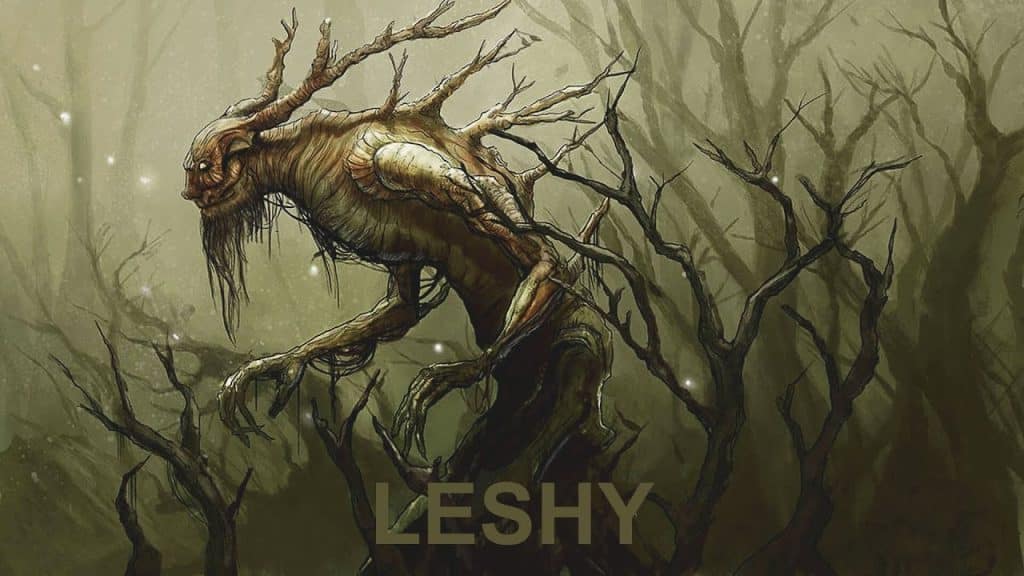
- Origin: A woodland spirit from Slavic mythology who protects the animals and the forest.
- Cultural Significance: Represents the interconnectedness of nature and the role of guardianship.
- Modern Depictions: Inspires characters in environmental narratives and fantasy, emphasizing the importance of ecological balance and protection.
The Leshy, a Slavic woodland spirit, protects forests and animals and is often depicted as having a close connection with the natural world.
This spirit represents the themes of guardianship and the mystical powers of nature.
Leshy figures inspire modern environmental narratives and fantasy literature.
They are often portrayed as guardians of natural realms, emphasizing the importance of nature conservation and the deep, frequently mystical connection humans have with the natural world.
24. Ladon

- Origin: Guardian dragon of the golden apples in the Hesperides’ garden.
- Cultural Significance: Symbolizes the ultimate guardian, embodying themes of temptation and protection.
- Modern Depictions: Appears in various fantasy genres as a guardian of sacred or magical items.
In Greek mythology, Ladon, the dragon guardian of the golden apples, is a potent symbol of vigilance and immortality. His role as the protector against those seeking the precious apples reflects the broader themes of temptation and the extreme measures taken to guard valuable items.
In modern fantasy, Ladon’s archetype influences characters and creatures guarding treasures, as seen in books like Rick Riordan’s Percy Jackson series and video games, where dragons often guard pivotal treasures or lands, echoing his mythical purpose.
Conclusion
In conclusion, the world of legendary creatures is a fascinating realm, and those beginning with the letter “L” offer a captivating glimpse into the beliefs and values of ancient societies.
By exploring the stories and symbolism behind these mythical beings, we gain a deeper understanding of how our ancestors made sense of the world around them.
From the protective Lamassu to the clever Leprechaun, these creatures embody universal human experiences and emotions that transcend time and culture.
As we uncover the mysteries surrounding these legendary beings, we not only entertain our imaginations but also enrich our appreciation for the power of storytelling.
So, the next time you encounter a tale of a mythical creature, take a moment to ponder the wisdom and insights hidden within these ancient narratives.

